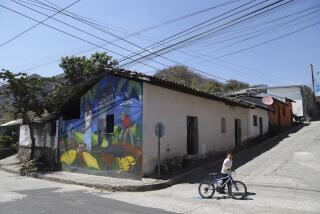A Compelling Request for Aid
When Ferdinand E. Marcos invoked martial law in the Philippines 15 years ago the Communist-led New People’s Army numbered between 350 rebels--the NPA’s own subsequent figure--and 1,000, the estimate of the Rand Corp. in a study it did for the U.S. Army. Today, with Marcos deposed and the Philippines once again moving to re-establish a popularly supported democracy, the NPA’s strength may be as high as 26,000, with tens of thousands of sympathizers and more than 1 million people in areas under its control. Marcos’ own corrupt and divisive policies fed the growth of the NPA. Whether President Corazon Aquino can arrest and reverse that growth depends on many things, not least the help she gets from the United States.
Aquino complains that U.S. military aid has been both slow and inadequate. She has a point. So far this year military aid has totaled only $50 million, enough to pay for about 10 helicopters, several dozen trucks and the overhaul of landing craft and coastal ships that are militarily essential in a country of 7,000 islands. The Reagan Administration wants to provide another $50 million, but Congress is balking.
The House has voted to kill the entire request, while the Senate Appropriations Committee has approved a grant of only $29.4 million. In addition, the committee has proposed a $25-million loan at 5% interest, hardly an appealing offer to a country already staggering under a $26-billion foreign debt.
Military means alone won’t, of course, curb the NPA threat. The appeal of the insurgency has steadily expanded as poverty, malnutrition and unemployment have spread in the countryside, and until there is evidence that these basic problems are being successfully addressed the sense of hopelessness and powerlessness that feeds support for the NPA will remain. After 14 months in power the Aquino government still hasn’t shown it is ready to move in any fundamental way to improve the lives of most Filipinos. Last week’s elections may open the way to such actions, but that remains to be seen.
Meanwhile, the army continues to come off second-best in most of its confrontations with the NPA, and Aquino’s plea for more military aid takes on added urgency. The U.S. foreign aid budget generally has been harshly treated by Congress, in part out of response to the deficit reduction requirements of the Gramm-Rudman Act. The Philippines, in the current fiscal year, is getting $250 million in economic aid, along with $13 million in development assistance. None of this directly helps the military in its fight against the insurgents.
If more money can’t be found for military grants to the Philippines, thought should be given to diverting funds from other intended recipients. There is a need behind all the Administration’s foreign aid requests. It’s clear now that more military aid to the Philippines has become an especially compelling one.
More to Read
Sign up for Essential California
The most important California stories and recommendations in your inbox every morning.
You may occasionally receive promotional content from the Los Angeles Times.










